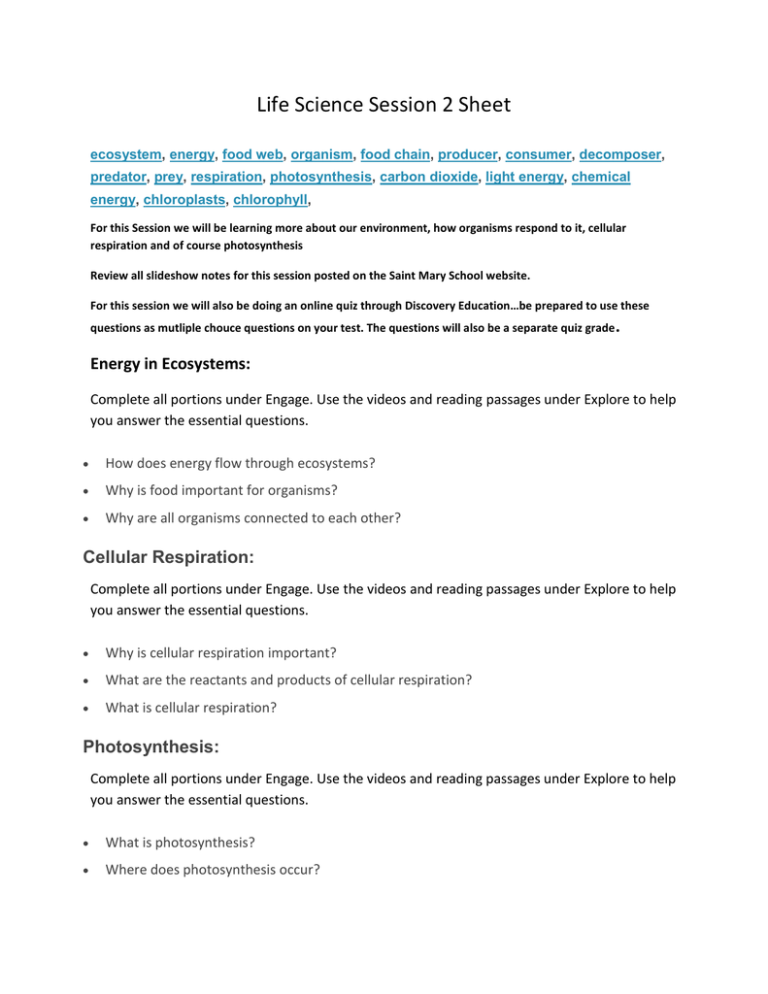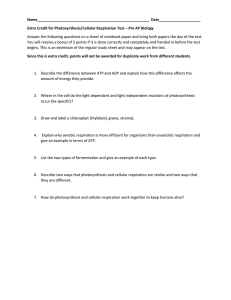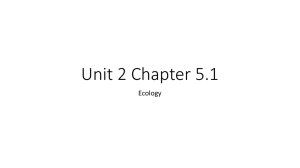Session 2 Sheet - Saint Mary Catholic School
advertisement

Life Science Session 2 Sheet ecosystem, energy, food web, organism, food chain, producer, consumer, decomposer, predator, prey, respiration, photosynthesis, carbon dioxide, light energy, chemical energy, chloroplasts, chlorophyll, For this Session we will be learning more about our environment, how organisms respond to it, cellular respiration and of course photosynthesis Review all slideshow notes for this session posted on the Saint Mary School website. For this session we will also be doing an online quiz through Discovery Education…be prepared to use these questions as mutliple chouce questions on your test. The questions will also be a separate quiz grade . Energy in Ecosystems: Complete all portions under Engage. Use the videos and reading passages under Explore to help you answer the essential questions. How does energy flow through ecosystems? Why is food important for organisms? Why are all organisms connected to each other? Cellular Respiration: Complete all portions under Engage. Use the videos and reading passages under Explore to help you answer the essential questions. Why is cellular respiration important? What are the reactants and products of cellular respiration? What is cellular respiration? Photosynthesis: Complete all portions under Engage. Use the videos and reading passages under Explore to help you answer the essential questions. What is photosynthesis? Where does photosynthesis occur? Websites to go to in order to learn more about Food Chains and Food Webs: http://www.vtaide.com/png/foodchains.htm http://www.geography4kids.com/files/land_foodchain.html Trophic Levels: The trophic level of an organism is the position it holds in a food chain. 1. Primary producers (organisms that make their own food from sunlight and/or chemical energy from deep sea vents) are the base of every food chain - these organisms are called autotrophs. 2. Primary consumers are animals that eat primary producers; they are also called herbivores (plant-eaters). 3. Secondary consumers eat primary consumers. They are carnivores (meateaters) and omnivores (animals that eat both animals and plants). 4. Tertiary consumers eat secondary consumers. 5. Quaternary consumers eat tertiary consumers. 6. Food chains "end" with top predators, animals that have little or no natural enemies.








